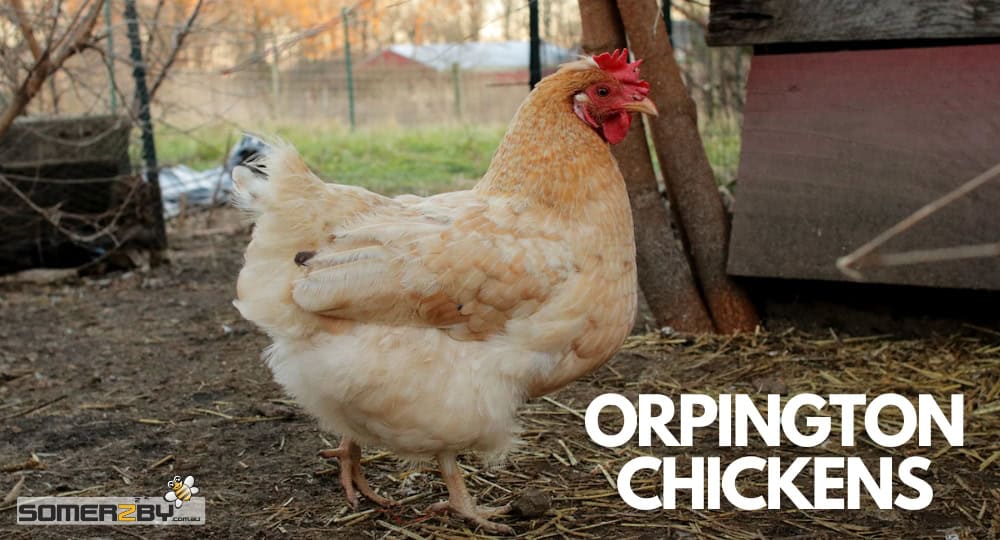Chickens, Info Guides
Orpington Chickens – The Ultimate Care Guide
Orpington Chicken Breed Profile
The Orpington breed is a great backyard chicken. They are commonly found as family pets.
This is because of their docile nature and fluffy feathers. They enjoy being handled and are often referred to as ‘lap chickens’.
Orpingtons are classified as a dual purpose chicken breed. They are reliable egg layers and large enough to make a decent table bird.
They come in various colour options. The Buff Orpington is by far the most popular, followed by the Black Orpington.
Chicken Breed History
Orpington chickens got their name from the town they originated in – Orpington, England. The breed was first developed in the late 1800’s by William Cook. At this time, England’s ‘hen fever’ was dying down.
Backyard chicken keepers now had many different breeds in their flock imported from Asia. However, these breeds didn’t handle the cold English weather and didn’t lay many eggs.
Mr Cook designed the Orpington chicken to be more practical. While less exciting than exotic chicken breeds, they are a very useful bird and a true dual purpose breed.
Their best traits are laying eggs well, being a suitable table bird and handling cold climates. The first colour variation was the Black Orpington. Mr Cook created them by mixing Plymouth Rocks, Langshans and Minorcas.
The Black Orpington chicken breed was entered in many shows and became very popular.
Joseph Partington then increased the size and amount of feathering on the Orpington birds.
The next variation was the Buff Orpington, created with Dorkings, Gold Spangled Hamburgs and Cochins. Later, the White and Blue Orpington varieties were created.
In 1900 in Germany, the first bantam Orpington was entered into a show. They can still be found today but are rare.
Less common colour varieties have been created since, including Lavender and Gold Laced Orpington chickens.
Appearance
Orpington chickens have a broad, short body with a low stance. Their fluffy feathers make their body look even wider than it is.
They have clean feet, meaning they don’t have feathers on them. Orpingtons have reddish-brown eyes.
This breed can either have a single comb (with five points) or a rose comb. Their comb, wattles and earlobes are all red.
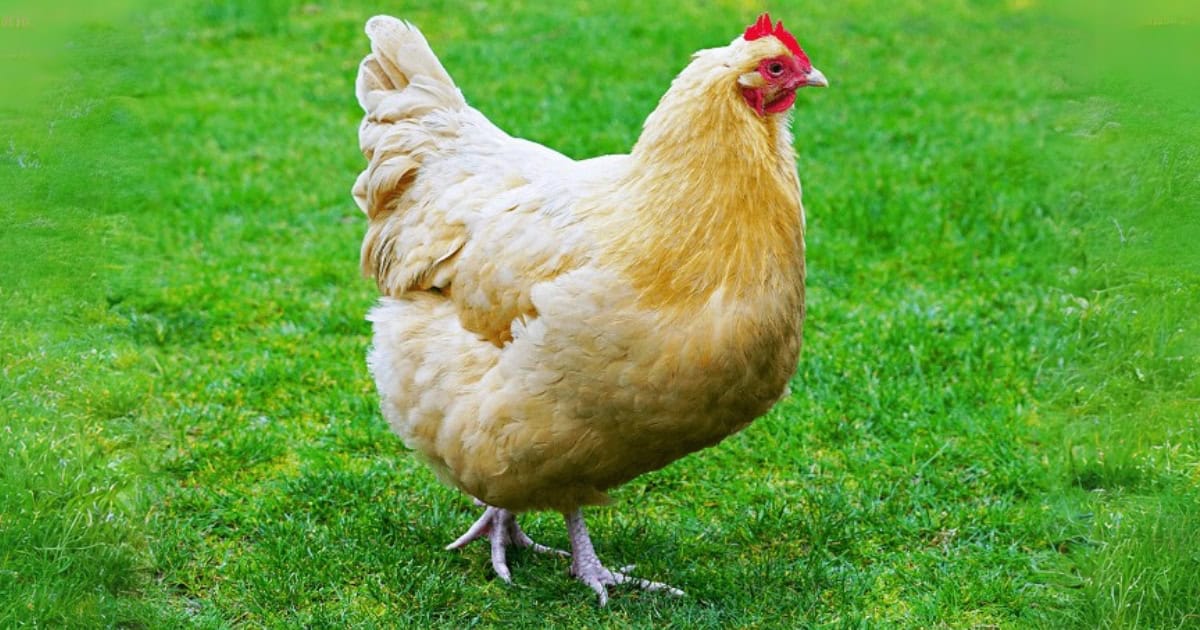
Orpington Appearance
Orpington chickens have a broad, short body with a low stance.
Size
Orpington chickens come in both standard and bantam sizes. In standard Orpingtons, hens weigh 3kg and roosters weigh 4.5kg.
They are considered a tall bird. Hens are around 30cm tall and roosters are around 40cm tall!
If being used as table birds, they are usually ready at around 22 weeks.
In bantam Orpingtons, hens weigh 800g and roosters weigh 1.5kg. They are one of the largest bantam breeds. Bantam Orpingtons are rare, making them an exciting addition to your flock.
Feather Colours
Orpingtons have fluffy feathers that are very thick and soft to touch.
Orpington chickens come in a wide variety of colours. These include:
Buff Orpington Chicken
The Buff Orpington is by far the most popular colour variation.
They were the second variety to be created in 1886. They were first officially recognised in 1902.
Affectionately known as ‘Buffs’, the Buff Orpington has yellow feathers. Both their feet and beaks are a pale pink colour.
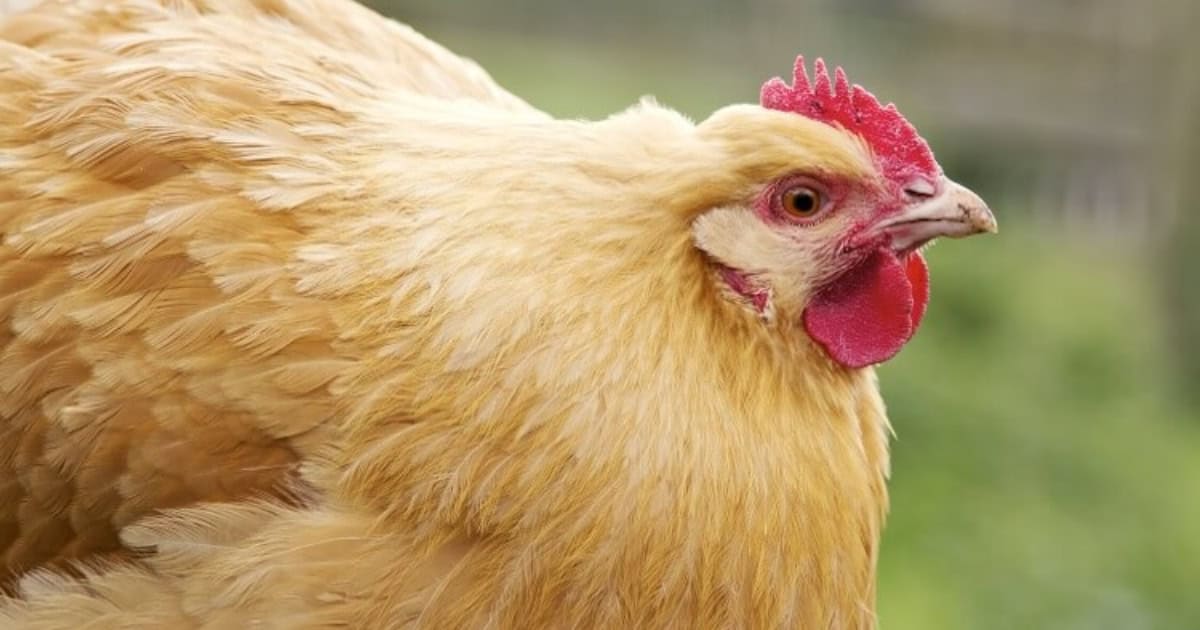
Buff Orpington Chickens
known as ‘Buffs’, the Buff Orpington has yellow feathers
Black Orpington Chickens
The Black Orpington was the first variety created by William Cook in 1886. It was first officially recognised in 1905.
It is the second most commonly found today.
The Black Orpington has black feathers with a green sheen. They have black feet and beaks too.
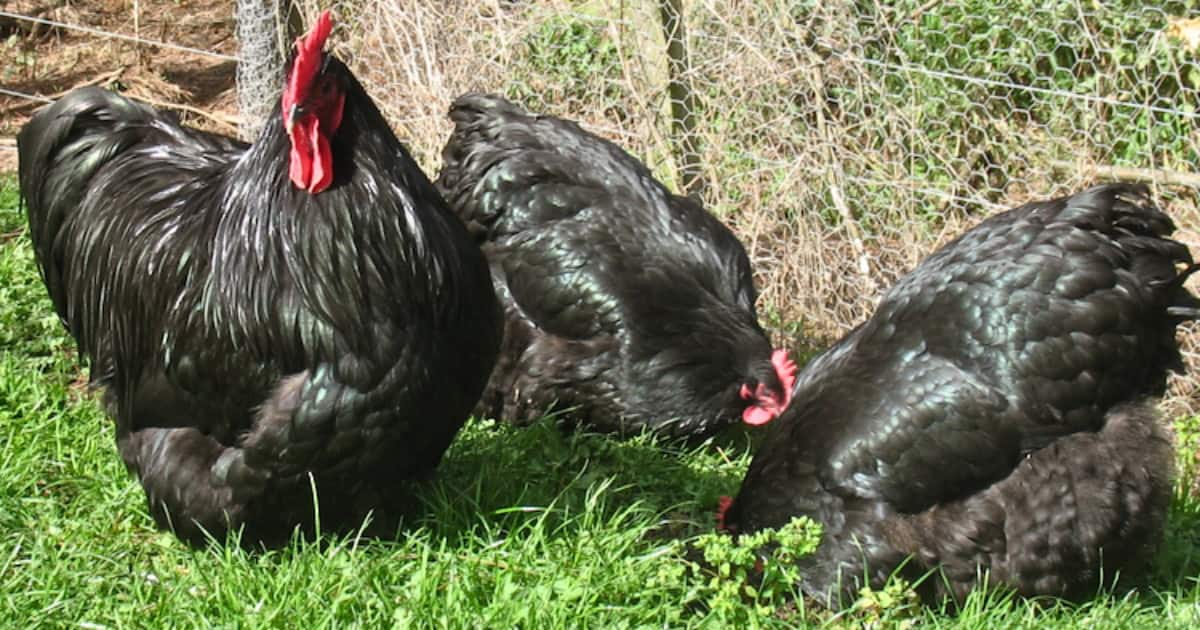
Black Orpington Chickens
The Black Orpington has black feathers with a green sheen
White Orpington Chickens
Godfrey Shaw first created White Orpingtons but he called them ‘Albions’. Their name was changed shortly after.
They were first recognised as an Orpington chicken variety in 1905.
White Orpingtons have all white feathers. They have pale pink feet and beaks.
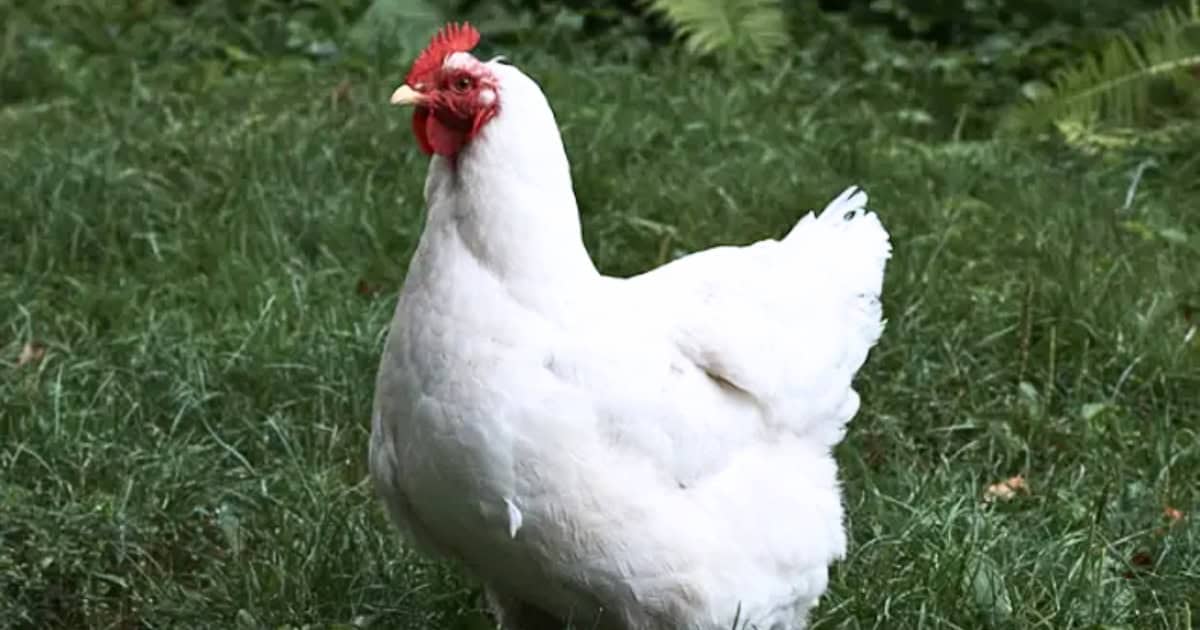
White Orpington Chickens
White Orpingtons have all white feathers and a red head
Blue Orpington Chickens
The Blue Orpington was developed in 1908 by William Cook’s daughter Elizabeth Jane Cook. She also created the less popular Cuckoo Orpington.
The Blue Orpington wasn’t officially recognised until 1923.
Blue Orpingtons have dark grey feathers. They aren’t really blue! Their head and neck are a darker grey compared to the rest of their body.
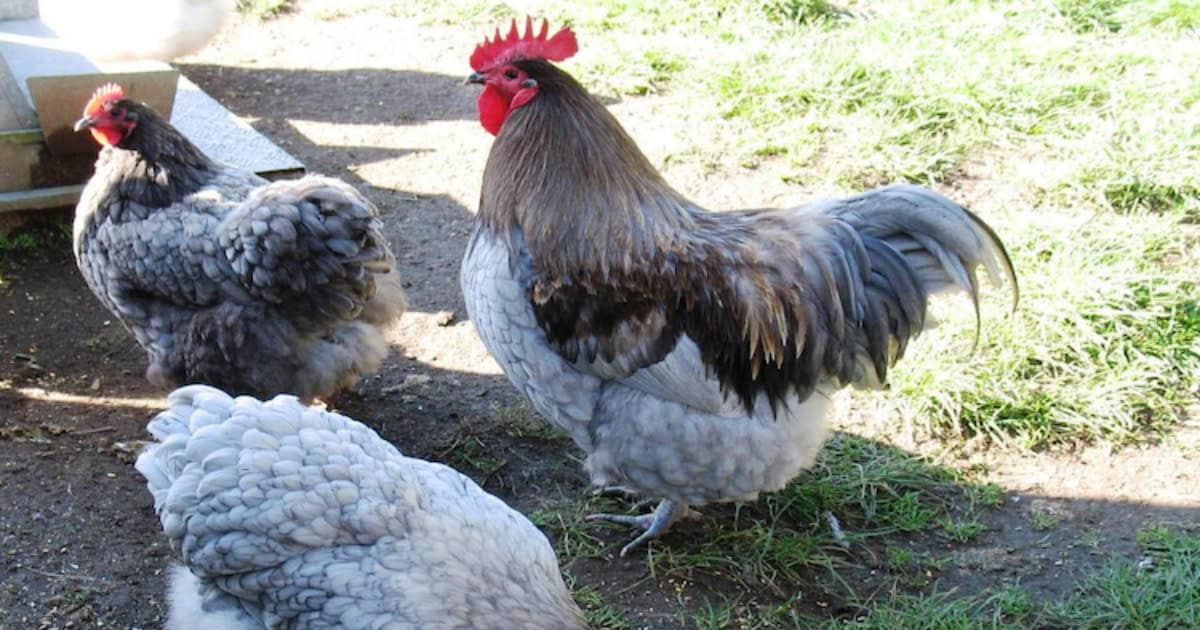
Blue Orpington Chickens
Blue Orpingtons have dark grey feathers (not blue)
Other Orpington Colours
Other Orpington colours include:
- Lavender
- Chocolate
- Cuckoo
- Red
- Gold laced
- Spangled
- Partridge
- Splash.
Note: These colours are less commonly found.
The Jubilee Orpington was created in honour of Queen Victoria’s diamond jubilee. It is mahogany with black and white speckles.
Egg Production
Orpington chickens have good egg production.
The hens typically begin laying eggs when they are around 24 weeks old.
Egg Color and Size
Orpington hens lay light brown eggs. Their eggs are large.
Egg Laying
Orpington chickens are reliable egg layers.
An Orpington hen will lay 200-250 eggs per year. That is roughly 4 eggs per week per hen!
Like all chickens, their egg laying will reduce during winter. Sometimes in the very coldest weeks they will stop laying completely. Don’t worry! This is only temporary. Once it warms back up, their laying will begin again.
They will also stop laying while they are molting. However, this usually overlaps with winter.
Orpington Chickens as Pets – What You Need to Know
Orpington chickens make great backyard chickens. They are very beginner friendly as a family pet.
Orpingtons are a very quiet bird so are suitable for suburban backyards. The Buff Orpington is said to be exceptionally quiet.
They are also a great show bird. This is because they are easy to handle, quiet and handle new environments (such as being put on stage at a show) well.
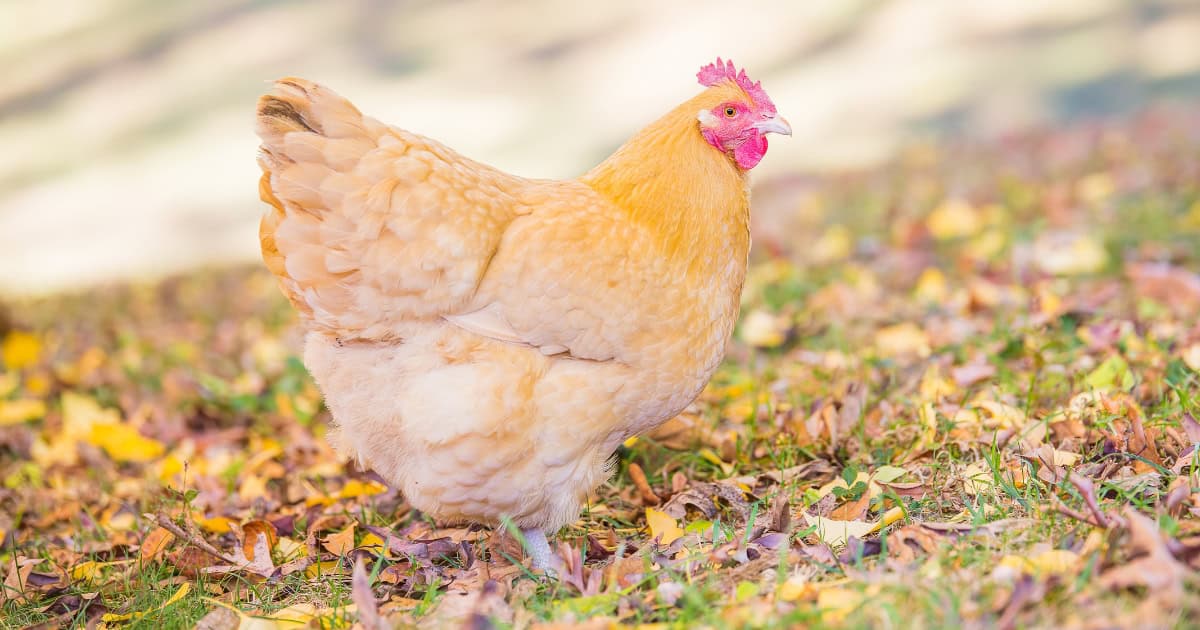
Orpington Chickens As Family Pets
Orpington chickens are perfect for a family household as they are quiet and provide consistent eggs.
Because of their large size, Orpingtons do not fly well. They may be able to fly better at a younger age but once they are fully grown they will be too heavy to get more than a few feet off the ground.
The bantam Orpington can fly a little better (because they aren’t as heavy) but are still not great at flying.
Temperament
Orpington chickens are a docile breed. This makes them a suitable backyard pet for families with children or elderly people.
They are friendly and easy to approach. They often form a bond with the human who feeds them and will excitedly follow you around the yard.
They will even let you cuddle them! That is why they are sometimes referred to as a ‘lap chicken’.
Their docile and gentle nature means they are lower down in the flock pecking order.
When mixing them into your flock with other breeds, be careful to only mix them with other docile or similar breeds.
When mixed in with more aggressive and confident breeds, the Orpington is prone to being bullied, pecked at or injured.
Suitable breeds include Silkies, Cochins or bantam breeds.
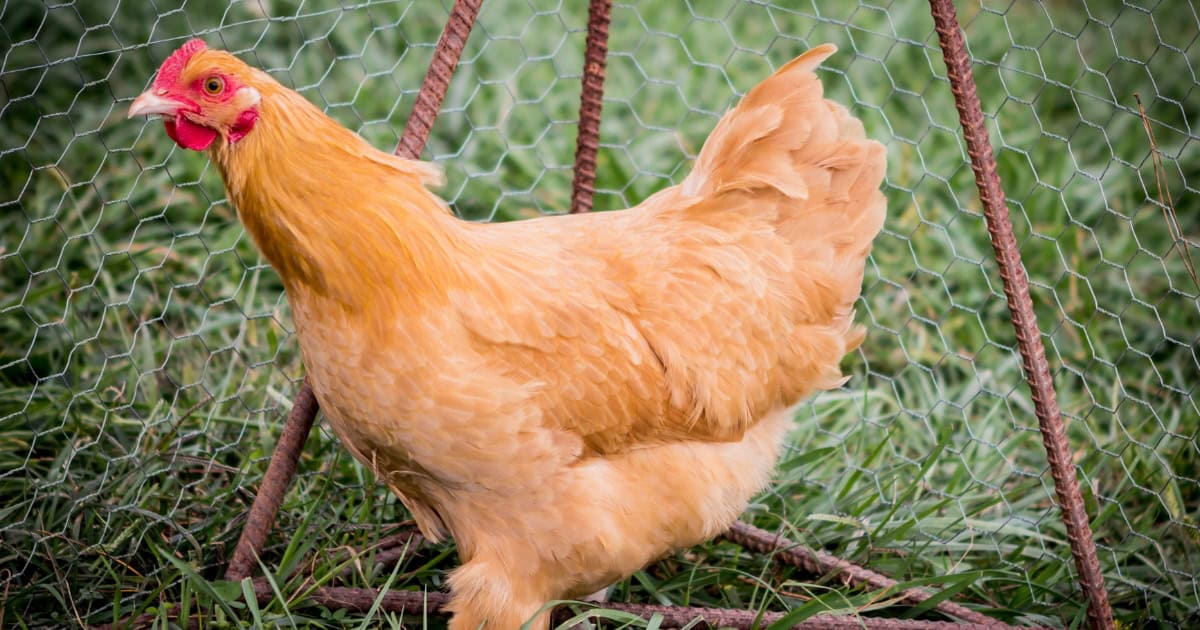
Orpington Temperament
They often form a bond with the human who feeds them and will excitedly follow you around the yard.
Orpington Chicken Health
As a chicken keeper, you will need to know if your chicken is okay. Luckily, Orpington chickens have very few health issues.
Like all chicken breeds, they are susceptible to mites and lice. Regularly check their skin and feathers.
They are prone to obesity so be careful not to over feed them and limit treats.
They handle cold climates well as their thick feathering keeps them warm.
However, this breed struggles in hot weather. In the hot Australian summer, it is important to provide constant shade and access to cool water in order to prevent heat stroke and death.
Chicken Coop
Selecting a chicken coop for your Orpingtons is a big decision.
The Orpington breed will tolerate confinement but is much happier when they are allowed to free range.
The size of the coop will depend on what you plan to do. If your Orpingtons will be inside the coop full time, you will need something bigger with a large run area.
On the other hand, if they will only be locked inside the coop at night time and will be let out during the day to free range in your yard, then you could choose a smaller coop.
Make sure there is enough room on the perches for them all to sit at the same time. That way they all have somewhere to roost at night.
Because the Orpington is a heavy breed, they prefer coops with low perches. If your coop has very high perches, they may injure their legs when they jump down.
Nesting Box
Make sure your coop has a nesting box. This is where your Orpington hen will lay her eggs.
Most hens will naturally head to the nesting box to lay as it is an enclosed area that makes them feel safe and protected.
You only need one nesting space for every two or three hens. They don’t need one nesting space each.
They won’t all lay eggs at the same time and are usually happy to share the nesting boxes with each other.
Breeding
If you are interested in hatching fertile eggs, the Orpington is a suitable breed!
Orpington hens have a tendency to go broody, meaning they have a natural urge to sit on eggs and hatch them.
If you are not planning to hatch fertile eggs then you probably don’t want your hens to go broody.
Broody hens will sit in one place for a long time, not eating properly and neglecting their health.
They are also less friendly and approachable as they will be overly protective and defensive of their nesting area.
To avoid getting broody hens, backyard chicken keepers should remove eggs from the coop daily.
If you get a broody hen, try regularly picking her up and removing her from the nesting area.
If she keeps heading back, you may have to temporarily block off access to the nesting area.
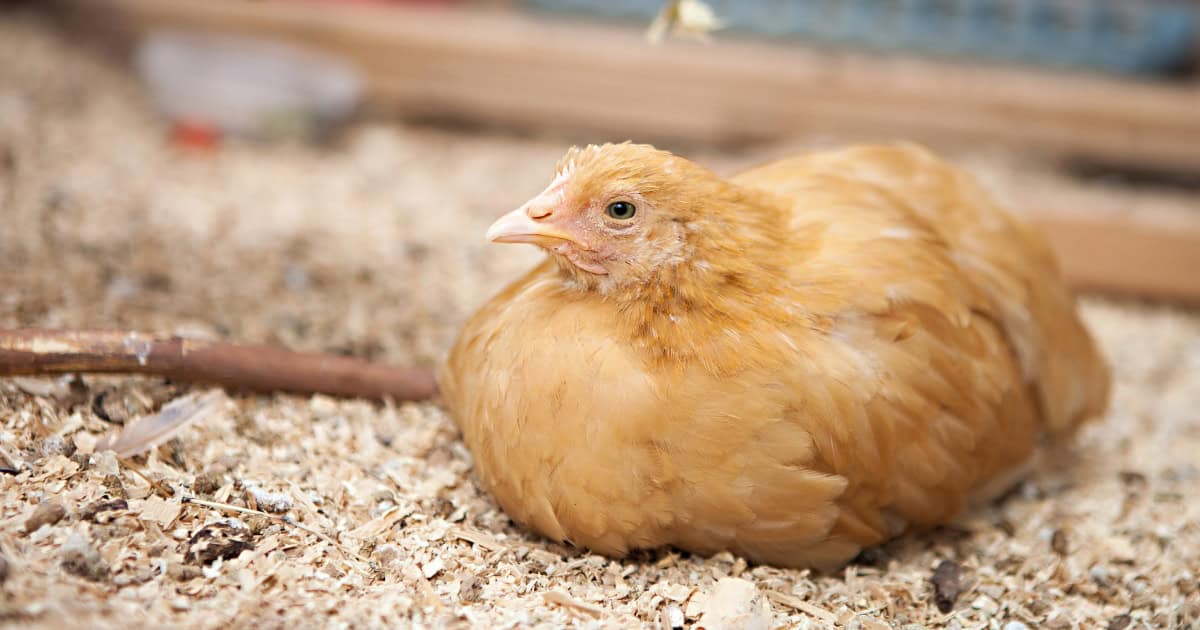
Breeding Orpington Chickens
Orpington hens have a tendency to go broody, in which they sit on eggs and hatch them.
Rooster vs Hen
Compared to other breeds, an Orpington rooster is fairly docile. Poultry owners report that Buff Orpington roosters are especially calm.
If you are interested in keeping a rooster for the first time then Buff Orpingtons may be a good breed to start off with.
Note that all roosters can be prone to being aggressive, even Buff Orpingtons. This is especially the case during breeding season.
They will be protective of hens and may try attack you if you approach them.
If you have small children, always supervise them anytime they are near a Buff Orpington rooster.
Orpington hens are much easier to look after. They are docile and friendly. They also provide your family with a free supply of fresh, light brown eggs.
Chicks
It is very difficult to determine if baby Orpington chicks are male or female.
People buying baby chicks will often want to know their sex early on as they are only interested in keeping hens and not roosters.
Some poultry experts can sex chicks from one day old using a technique called ‘vent sexing’.
This can injure your chick if done incorrectly so leave it up to the professionals.
Whilst baby male and female Orpington chicks look almost identical, there are a few subtle differences.
When they are still very small, a male Buff Orpington chicken will have white colouring on its upper wings.
Female Buff Orpingtons may have pale brown markings on their head and back.
As they start to grow, male Buff Orpingtons will grow taller than the females and have thicker legs.
Male Buff Orpington chicks will also begin to behave differently. They will try to crow from a young age, however it won’t be very loud yet.
They may also seem bossy and try to herd up the females.
Buying Orpington Chickens
Orpington chickens are available to purchase in Australia. They can be purchased from professional or backyard poultry breeders.
To find sellers, contact local poultry supply stores or search online marketplaces.
Price can vary based on demand and availability.
The average point of lay Orpington hen is $30. This means they are at the age where they are about to start laying, ie. 5 or 6 months old.
Roosters will always be cheaper as less people want them. Sometimes people even give them away for free!
Day old Orpington chicks are usually $10 each. They are cute little balls of fluff but require extra care.
Chicks will need to be kept warm at 33 degrees with a constant heat source. They will also need to be separated from adult chickens until they are old enough to defend themselves.
If you buy day old Orpington chicks, you are at risk of getting some roosters.
Another option is purchasing fertile Orpington eggs. This is the cheapest option as they are usually only $24 per dozen.
To hatch them, you will need an incubator or broody hen. This can take up a lot of time and effort and there is a chance some of them won’t hatch.
Hatching poultry is a great activity to do with kids, either at home or at school.
The Buff Orpington is the most common variety and therefore is usually cheaper.
Rarer varieties such as Lavender, Gold Laced, Blue and Splash are in higher demand and will cost a bit extra.
Breeders will also charge extra if you require the chickens to be delivered to you.




